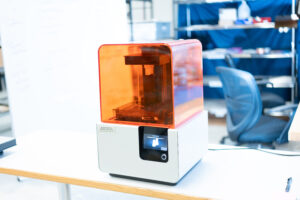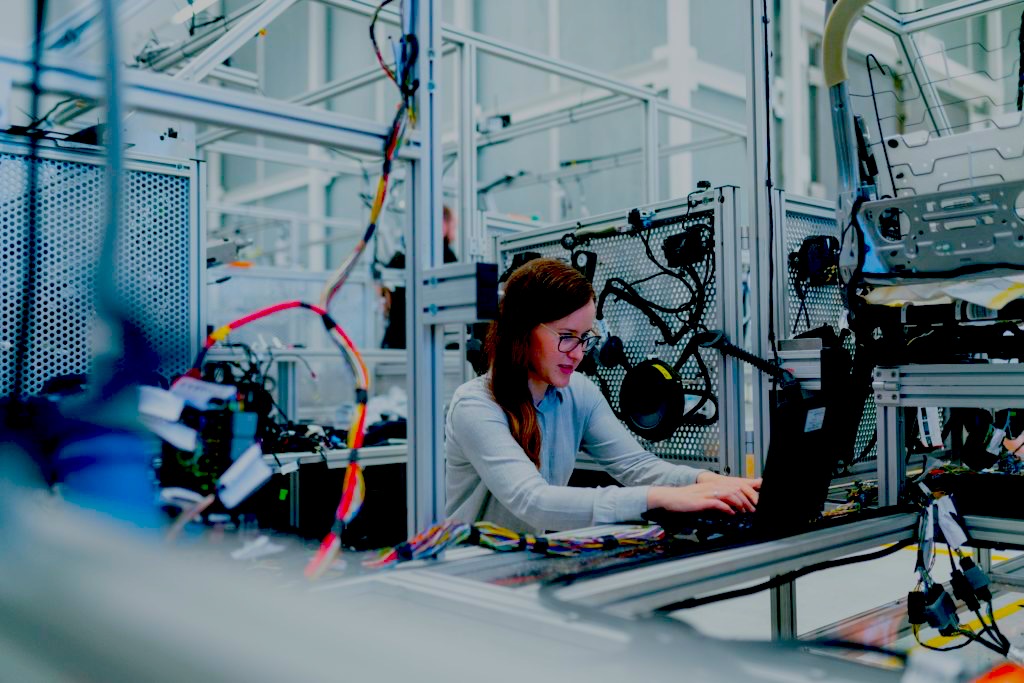Beyond AI and ML, US / EU regulatory alignment, wearable tech, 3D printing, funding and the supply chain should lead medtech innovators’ awareness for the balance of 2024 and 2025
As we reported in the GCMI news and blog, in early 2024, the FDA issued a final rule amending the device current good manufacturing practice (CGMP) requirements of the Quality System (QS) Regulation under 21 CFR 820 to align more closely with the international consensus standard for Quality Management Systems for medical devices used by many other regulatory authorities around the world.
“This rule amends 21 CFR 820 by incorporating by reference the quality management system requirements of the international standard specific for medical device quality management systems set by the International Organization for Standardization (ISO), ISO 13485:2016. The FDA has determined that the requirements in ISO 13485 are, when taken in totality, substantially similar to the requirements of the QS regulation, providing a similar level of assurance in a firm’s quality management system and ability to consistently manufacture devices that are safe and effective and otherwise in compliance with the Federal Food, Drug, and Cosmetic Act (FD&C Act).”
This has the potential to reduce some regulatory burdens for innovators while opening larger markets more quickly. Read on in more detail from the GCMI blog.
Wearable Technology and the Internet of Medical Things (IoMT)
Wearable devices are becoming increasingly sophisticated, providing continuous health monitoring and real-time data analysis. Devices like smartwatches, glucose monitors, and health patches are now capable of offering insights into a patient’s condition without the need for frequent visits to a healthcare facility. The IoMT, which connects these devices, allows for seamless data integration, enabling personalized and data-driven healthcare delivery (Prodigy).
We predict these devices will continue to proliferate. But a strong note of caution for innovators with novel wearable devices for healthcare: BEWARE ON CLAIMS. Start simply, get into the market, generate cash flow, gather data and use it to then support expanded claims in follow-on submissions, especially with respect to sensors.
Instead of claiming a new sensor can provide a diagnosis based on AI, back up. It is faster and easier to get to market by claiming the new product only generates and collects data, which the user must interpret themselves. More data can be collected from initial users which can be used to prove the sensor performance paired with a powerful AI/ML algorithm supports a stronger diagnosis claim.

Form 2 3D Printer
3D printing & bioprinting
For customization and personalization, rapid prototyping, cost effective small batch production (implants, rare devices or low volume production devices or components, BUT test articles must be manufactured the same way the production runs will.
3D printing technology is being used to create customized medical devices, implants, and even anatomical models for surgical planning. Bioprinting, a subfield of 3D printing, is advancing towards the creation of viable tissues and organs for transplantation. While full-scale organ printing is still on the horizon, the development of smaller tissue constructs is making significant progress (PTC) (Prodigy).
Beware of material limitations including consistency and quality control issues. Keep in mind also that 3D printing is excellent for small batch production and prototyping, but test articles for data intended to support regulatory submissions must be manufactured in exactly the same way commercial production runs will be. Production runs must be substantially identical every single time and you will almost certainly have to demonstrate this to auditors at some point in a medical device’s product lifecycle.
“For a brachytherapy device we developed with one industry leader, 3D printing in low volumes for user feedback and iterative design meant hundreds of thousands of dollars saved in its design and development,” Saylan says. “The tool had 15 components. Injection mold tooling can cost approximately $25,000 per component. Prior to a device design freeze, it is important to consider the required investment needed to obtain test articles that will be equivalent to final production, such as expensive tooling, especially if volumes may not be sufficient to support its economic profile. But designing a new medical device with thoughtful consideration for production in early stages will avoid expensive pitfalls and delays down the road.”
Take a closer look at what innovators need to know most about medtech manufacturing here.
Better ideas are coming to us more thoughtfully formed, but gaps in medtech innovators’ plans persist
“More innovators are coming to us with more established products, some patents and solid documentation than in just about any prior year in my tenure with GCMI,” Emily says. The tech push – or tech looking for a problem to solve – versus needs pull – technology being brought to bear on a specific unmet clinical need problem has abated, the latter being much more common than it is now, which is a good thing.
“But we are still discovering gaps in documentation and plans. Commonly, academic researchers and physician entrepreneurs think they are much farther along in their commercialization pathway than they really are. Risk analysis is commonly absent, which is critical to both the funding and regulatory requirement sides for new medical devices or technologies. Considerations for user error or failure modes must be comprehensively addressed and documented. Failure to do so puts many projects and startups at high risk of failure and a waste of precious resources.
“Your device – or its design, development and commercialization pathway, isn’t as simple as you think. Little things matter. Shelf life, for example, is a big deal. Polymers degrade sitting on the shelf. Proper testing of new medical devices includes, aging, environmental conditioning including transportation in cold, hot and humid conditions and transit simulation including “shake, rattle and roll” testing and drop testing. That can take six months or more at a cost of $50,000 – $100,000. You don’t want to have to repeat that process.
GCMI’s phase-gated approach to medtech innovation and commercialization helps ensure you achieve the right milestones in the right sequence in a capital efficient way.
Supply chain
Over the past two years, there has been notable improvement in the medical device industry’s supply chain resilience, though challenges remain. The COVID-19 pandemic exposed significant vulnerabilities, prompting the industry to rethink its approach to supply chain management. Companies have been working to diversify their supply bases, reduce dependency on single sources, and increase transparency across the supply chain.
While the medical device industry’s supply chain has become more resilient, these improvements require ongoing investment and strategic planning. Companies are learning to manage risks more effectively, but the balance between immediate financial returns and long-term resilience remains a delicate one.
“In the same way innovators tend to believe their devices are much simpler than they really are, supply chain considerations and plans are not so easily addressed,” Emily says. “Component and material sources can ebb and flow on tides of political tensions, or unforeseen disruptions like the Suez Canal’s closure due to the Ever Given’s grounding in 2021.
“A robust supply chain, along with all of the associated quality assurances, can make the difference between a healthy medtech enterprise and one that’s on life support or worse.”
The overall state of the medtech innovation market
According to McKinsey, “Going into 2024, we expect overall medtech revenue growth to stabilize at 100 to 150 basis points above pre pandemic rates (Exhibit 1). And as industry leaders look forward to the next five years, cardiovascular health, digital healthcare, and robotics are expected to be among the fastest-growing segments.”
They caution, however, “These trends present several hurdles for medtech companies. First, as market growth rises, companies will find it more challenging to outperform expectations. Second, the widening growth rates between segments will require conglomerates to reallocate resources more thoughtfully. And third, the race to serve ASCs, medical offices, and outpatient settings will continue to intensify.” All of this despite expectations for a “banner year of innovation” due at least in part to a 15% reduction in waiting times for FDA reviews between 2020 and 2022.
Funding is always an issue for early stage medtech innovators, especially as investors beyond the grant stage continue to demand high levels of “de-risking” achievement in their invested companies or technologies. Therefore, we address …
The state of funding and what it means for aspiring innovators?
The funding landscape for medical device startups has undergone significant changes in the past year, influenced by broader economic factors, investor sentiment, and the evolving needs of the healthcare industry. Investors still demand high levels of “de-risking” in their medtech investments, on-time and on-budget milestone achievement, strong exit potential and / or profit generation, not simply growth.
Again according to McKinsey, the total volume of venture capital (VC) funding in the medtech sector has decreased compared to the boom years of 2020 and 2021. This is partly due to rising interest rates, economic uncertainty, and a general tightening of capital markets. Startups now face more scrutiny during due diligence, and only those with strong business cases, clear regulatory pathways, and robust clinical data are securing funding.
Non-dilutive funding like grants are excellent starting points for very early stage novel medtech innovation, but their ability to bridge multiple milestones is limited. Larger medical device companies are increasingly investing in startups through their own venture funds or programs like J&J’s JLabs. And the federal government’s Advanced Research Projects Agency for Health (ARPA-H) is making significant investments in medtech innovation to help successfully commercialize more promising medical technologies, especially those emanating from academia.
“Innovators commonly underestimate the amount of time and money required to achieve key milestones by 2-3X if not more,” Saylan says. “Low-risk Class I products Technologies that may appear relatively straightforward. But many novice innovators are shocked to discover the amount required to get where they are today. Be prepared to raise a lot more money than you think you’re going to need and know that a $25,000 or $50,000 grant won’t get you nearly as far as you think it will.”
Aspiring innovators must be prepared to do the following for successful funding realization throughout the development cycle:
- Articulate and demonstrate a clear value proposition that can be validated
- Know that you are reaching out to investors whose “philosophies” and experience match your technology or market
- Focus on regulatory and market readiness (including the aforementioned implications for manufacturing at scale)
- Leverage Strategic Partnerships with established industry players for resources, validation and potentially funding
- Prepare for Rigorous Due Diligence: de-risking demands from investors of all types includes strong intellectual property (IP), clean, quality data, accuracy in development timelines and costs, manufacturing transfer and a strong post-market or exit strategy.
In summary, while the funding environment has become more challenging, startups that are well-prepared, with clear value propositions and strategic plans, can still find success. Innovators must be agile, resourceful, and focused on delivering tangible results to attract and secure the necessary funding to bring their innovations to market.

Reasons for optimism: a culture of knowledge, collaboration the industry and investors are noticing.
“The infrastructure growth and robust culture of collaboration in medtech innovation throughout the southeast are strong reasons for optimism,” Emily says. The global and national ‘landscape,’ along with venture funds and entities like Portal Innovations who will celebrate the opening of their new facilities at Science Square in September are acting on their acknowledgement that there is a wealth of talent, technology and ideas emanating from the region that is worth investing in. I expect we will start seeing a shift in reputation away from one of unrealized or under-realized potential to one more about successfully funded, successfully commercialized medical technologies rooted in Atlanta and points adjacent throughout the southeast.”
About GCMI
“Based on deep experience and variety in products supported, GCMI knows the requirements for commercialization across the breadth and depth of new medical technologies from the simplest to the most complex. But they know what’s even more important. They know what a technology needs to be within those requirements to actually be successful in the clinic and in the market.
“We can’t get where we want to go, as efficiently and effectively as we need to get there without GCMI.” – Kamil Makhneija, Founder and CEO, Jackson Medical
At GCMI your success is our primary concern. Remember, It’s never too early to get in touch.
